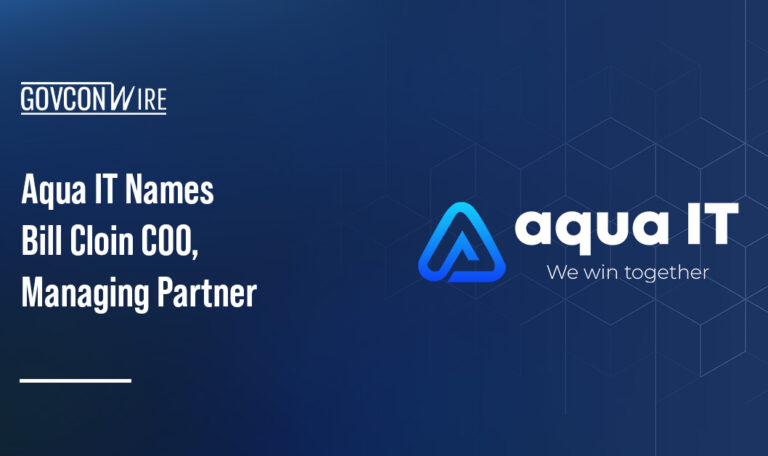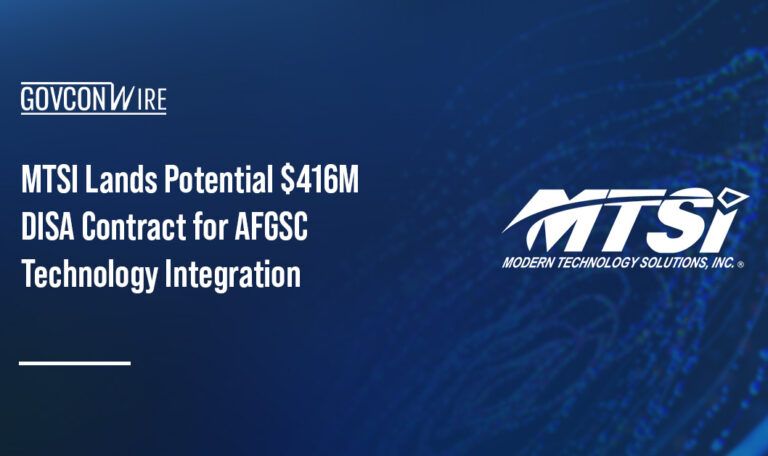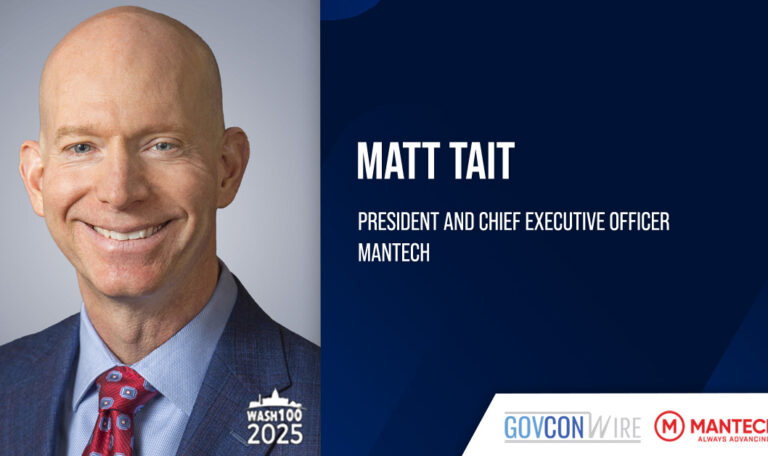Kapil Wadhera has been at Intel for over 35 years and has gained a breadth of experience from across the company — from chip design to marketing, sales to general management. Given his wide-ranging expertise, he was an obvious choice to lead one of the key Intel Foundry efforts. This initiative was created in response to the concentration of semiconductor manufacturing in Asia, rising geopolitical tensions and the need Intel saw for public-private partnerships on semiconductor technology so that warfighters can be equipped with an asymmetric advantage against rival threats.
For the last several years, Wadhera has helped lead Intel to build up a stateside chip production hub that can serve both industrial and defense needs without disrupting commercial operations. This mission has been deepened and boosted through efforts like the Rapid Assured Microelectronics Prototypes – Commercial program, a.k.a. RAMP-C, and the State-of-the-Art Heterogeneous Integrated Packaging, or SOTA SHIP, program on which Intel is the prime contractor.
To better understand the unique offerings of Intel Foundry and get a glimpse at Wadhera’s professional approach, GovCon Wire engaged in a detailed conversation with the executive.
GovCon Wire: Where are you seeing the most exciting opportunities to deliver better capabilities to our warfighters today, and how are you harnessing these opportunities?
Kapil Wadhera: If we look at our civilian lives, every aspect is moving to digital, and the same thing is happening for our warfighters. The need for computing is shifting from centralized locations to the edge, with more sensors and more compute power at the edge. Missions are transforming as well—historically, there were manned missions, but to stay competitive now, we need more unmanned missions. In the past, there were just a few drones, but now we could have swarms of drones gathering the intelligence needed to keep our warfighters in the best position.
All of these advancements require more technology, not just in terms of capability and performance, but also to deliver size, weight, power and cost—a.k.a. SWaP-C—benefits. Smaller, lighter and more efficient technology allows for longer mission durations and reduced costs. Additionally, artificial intelligence is becoming pervasive, impacting every aspect of what we do, and it’s crucial for our warfighters as well. Both the need for advanced technology and AI are driving the demand for stronger compute power and better performance.
Currently, onshore foundry capabilities for the government and defense industrial base are limited to about 12-nanometer processing technology. We’ve been focused on bringing leading-edge technology, such as Intel’s 18A, to the DIB and government. This technology offers leadership in areas like PowerVia backside power technology, which improves wire routing and cell utilization, and RibbonFET gate-all-around transistors, which together provide a significant step change in performance and transistor density on chip.
All these advancements will provide better solutions for our warfighters and improved SWaP-C benefits for the government and defense sectors. The goal is to continue driving asymmetric advantage for our warfighters. We’ve been working actively to leverage all of Intel’s assets, making them available to both commercial customers and the defense industrial base, helping the industry move forward.
GCW: At the Intel Direct Connect event, Intel Foundry unveiled its strategy of “Systems Foundry for the AI Era.” Can you share why this strategy and offering are relevant for the aerospace, defense and government sectors?
Wadhera: Building on what we see as growing industry needs, as compute and sensor capabilities increase and missions become more autonomous, the expanding requirements are for a full solution that goes beyond the process technology that a typical foundry offers. Process technology, manufacturing capacity, advanced packaging and test services need to be augmented with design and systems acceleration tools, building blocks and services to help customers deliver a complete solution—whether those customers are in the defense industrial base or the government. Intel is the world’s only foundry offering a complete system foundry capability to its customers.
When you consider leading-edge onshore foundry technology in the U.S., until Intel’s recent foundry offerings, the most advanced technology available was at the 12-nanometer level, which is seven or eight generations behind the current leading-edge commercial technology. Intel 18A now offers customers leading-edge technology for their solutions. However, this is not enough. Customers need an ecosystem with tools, flows, methods and intellectual property.
To meet this need, we created an alliance with key suppliers like Synopsys, Cadence, Ansys and Siemens, who provide tools that the defense industrial base and government are already comfortable with. We established an IP alliance to give the customers access to pre-built IPs, so they don’t need to keep reinvesting in them. We enabled a design alliance, a cloud alliance and, specifically for the US military and government customers, a USMAG alliance, bringing together partners actively working with these sectors.
However, given the geopolitical landscape and the lessons learned during COVID, relying on 80 to 90 percent of manufacturing in East Asia is no longer sustainable. Intel Foundry, with 50 years of semiconductor manufacturing experience, offers a broad manufacturing footprint, much of it onshore, providing greater security, resilience and reliability for government and defense industrial base customers.
With advancements in AI and the rising cost of developing leading-edge chips, there’s a shift towards disaggregating larger chips into smaller pieces using 2.5D and 3D packaging technologies, along with industry-standard interfaces like UCIe. This disaggregation into chiplets is more cost-effective since once a chiplet is verified, it can be reused in multiple mix-and-match configurations. You don’t need all chiplets at the leading edge; for instance, while compute might be at the leading edge, other components like I/Os can be at a different node, thus optimizing cost for solutions.
Intel’s offering goes beyond just foundry capabilities. We also provide system-level components like advanced packaging solutions (e.g., EMIB), test solutions and tools to deliver a performant software solution stack to run the entire platform. Over the last 50-plus years, Intel has built this expertise by enabling systems in the client, edge and data center markets. Our tools, expertise and software can help customers rapidly build complete solutions, not just chips.
Our goal is to help the defense industrial base and government take advantage of onshore foundry capabilities, leading-edge packaging and software tools to build comprehensive solutions that ultimately give our warfighters an asymmetric advantage.
GCW: Intel Foundry aims to play a critical role in meeting U.S. national defense needs. What progress have you made in your journey so far? How do you help enable DIB customers?
Wadhera: A lot of progress has been made on that front. We’re very excited about the CHIPS Act, which was passed a little more than a year ago with support from President Biden and Commerce Secretary Gina Raimondo. It’s a huge step forward for building onshore capability. Intel is also investing heavily in this area, with nearly $100 billion going toward expanding and upgrading our factories in Arizona, Oregon, New Mexico and Ohio. Beyond infrastructure, we’re focused on growing the talent pool by investing in education and developing expertise in semiconductors at universities and schools.
Our engagement with the Department of Defense started long before the CHIPS Act, with multiple programs already underway. One of the largest is Rapid Assured Microelectronics Prototypes – Commercial, or RAMP-C, which is designed to build a leading-edge commercial foundry onshore. By enabling this foundry, we can support both commercial customers and the defense industrial base. Through this program, defense companies like Boeing and Northrop Grumman have been using our technology to build test chips, and are now transitioning those into prototypes.
This is a significant shift—historically, the defense sector has lagged behind in technology adoption. For the first time in decades, the defense industrial base can access leading-edge technology alongside commercial customers. There’s a lot of excitement in the industry, and more defense industrial base customers are looking to engage with the program. We’re actively working to scale this program with the government.
We’re also leading the State-of-the-Art Heterogeneous Integration Prototype, or SOTA SHIP, program, another DOD initiative focused on heterogeneous packaging. We’ve developed multiple tiles, integrated them into solutions with partners like Raytheon and BAE Systems. This shows how we’re leveraging chip and tile architecture, using 2.5D and 3D packaging for more efficient solutions.
Finally, the USMAG Alliance has been crucial. By bringing together members who understand the specific needs of the defense industry—like security and performance requirements—we’ve created a collaborative ecosystem that accelerates development. We provide alliance members with early access to leading-edge technology and help with test chips, ensuring they are prepared to meet defense industry needs.
Overall, it’s been an exciting journey. We’re continuing to expand our partnerships and help customers build solutions for the future.
GCW: We are seeing a lot of interest in heterogeneous architectures across the industry. How is Intel Foundry supporting this architectural shift and specifically for meeting the needs of government, aerospace and defense segments?
Wadhera: As I mentioned, we’ve adopted a system foundry approach, and we’re doing several unique things. First, we have industry leading packaging technologies, including 2D, 2.5D and 3D packaging, which we use for our own solutions. We ship hundreds of millions of server and client units into the market, all taking advantage of this packaging architecture.
As we developed these solutions, we realized that for the industry to benefit more broadly, there needed to be standardized connection mechanisms. That’s why we’ve led the UCIe consortium, ensuring there’s an industry-standard capability that companies can use to easily connect chips in the advanced packages.
When breaking down a monolithic chip into smaller components, it’s crucial to consider how to optimize power, performance and thermal characteristics. We’ve built tools and capabilities to help our customers efficiently disaggregate and reassemble chiplet architectures.
The key benefit of this approach is that by bringing all these pieces together and building them onshore, we create a more secure and resilient solution for defense customers. We’re actively working with several DIB customers to help them leverage these technologies, tailoring solutions to meet their mission requirements.















